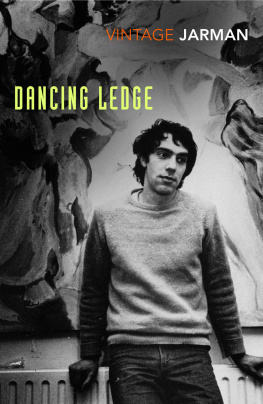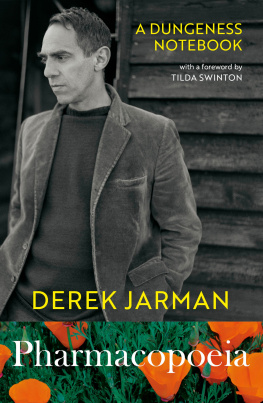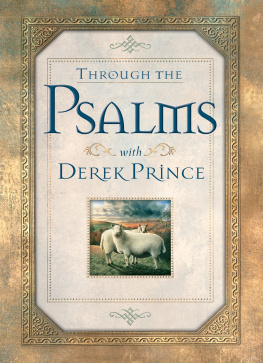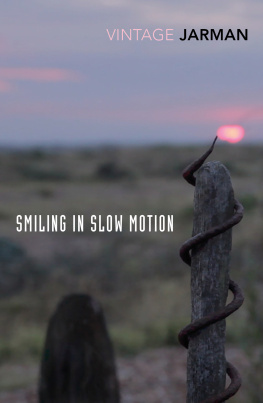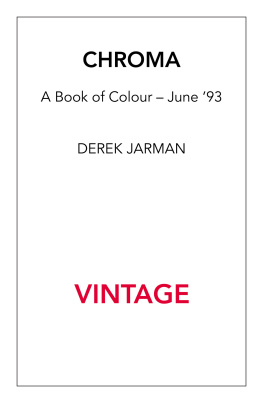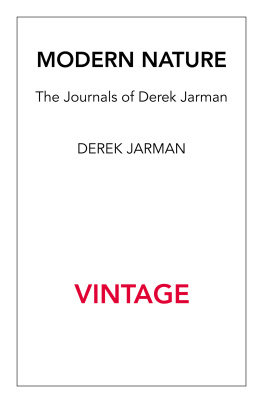Derek Jarman - Dancing Ledge
Here you can read online Derek Jarman - Dancing Ledge full text of the book (entire story) in english for free. Download pdf and epub, get meaning, cover and reviews about this ebook. year: 2022, publisher: Penguin, genre: Detective and thriller. Description of the work, (preface) as well as reviews are available. Best literature library LitArk.com created for fans of good reading and offers a wide selection of genres:
Romance novel
Science fiction
Adventure
Detective
Science
History
Home and family
Prose
Art
Politics
Computer
Non-fiction
Religion
Business
Children
Humor
Choose a favorite category and find really read worthwhile books. Enjoy immersion in the world of imagination, feel the emotions of the characters or learn something new for yourself, make an fascinating discovery.
- Book:Dancing Ledge
- Author:
- Publisher:Penguin
- Genre:
- Year:2022
- Rating:4 / 5
- Favourites:Add to favourites
- Your mark:
- 80
- 1
- 2
- 3
- 4
- 5
Dancing Ledge: summary, description and annotation
We offer to read an annotation, description, summary or preface (depends on what the author of the book "Dancing Ledge" wrote himself). If you haven't found the necessary information about the book — write in the comments, we will try to find it.
Dancing Ledge — read online for free the complete book (whole text) full work
Below is the text of the book, divided by pages. System saving the place of the last page read, allows you to conveniently read the book "Dancing Ledge" online for free, without having to search again every time where you left off. Put a bookmark, and you can go to the page where you finished reading at any time.
Font size:
Interval:
Bookmark:



Derek Jarman was born in London in 1942. His career spanned decades and genres, from painter, theatre designer, director, film maker, to poet, writer, campaigner and gardener. His features include Sebastiane (1976), Jubilee (1978), Caravaggio (1986), The Last of England (1987), Edward II (1991), and Blue (1993). His paintings for which he was a Turner Prize nominee in 1986 continue to be exhibited worldwide, and his garden in Dungeness remains a site of pilgrimage to fans and newcomers alike.
Derek Jarmans Garden
Modern Nature
Smiling in Slow Motion
At Your Own Risk
Chroma
Kicking the Pricks
For H.B. with love
When I started to write Dancing Ledge in a Roman hotel room (Croce di Malta) late in 1982, my worklife was becalmed, deserted by the funding bodies and the British cinema renaissance running hard for Mrs Thatchers new Jerusalem absolute beginners all. My own renaissance (Caravaggio made on the Isle of Dogs for 475,000 from the BFI) was three years away. Angry, Nico said why dont you write it out. One thing led to another and what started as a book on the frustration of funding led to the writing of an autobiography at forty. I had so little to do in the daylight hours, I stayed up late unbuttoning Levis in back rooms. Fucking which had seemed so impossible when I was eighteen was now easy and the HIV virus but a distant shadow. I would fall into my bed and wake in a happy hangover to write my Past.
Now a decade later my Queerlife is reprinted. For though it received only a couple of reviews, it has gradually sold out in a quiet corner of my friend Ian Shipleys Charing Cross Road bookshop.
The years since have seen the renewal and reinvention of my cinema (Angelic Conversation, The Last of England, and The Garden), the reclaiming of the Queer Past in War Requiem and Edward II, my move to Prospect Cottage, the building of the garden, catching the virus, and falling in Love.
My body was thrown into the struggle, bringing me into a spotlight in a way I never expected or wanted. On 22 December 1986, finding I was body positive, I set myself a target: I would disclose my secret and survive Margaret Thatcher. I did. Now I have my sights set on the millennium and a world where we are all equal before the law.
Derek Jarman
1991
All through Christmas, spent in this old farmhouse high on a windy hill in Tuscany, I have told myself I must begin recording the labyrinthine saga of the Caravaggio film 130 and the family has left for a hunters lunch with the contadini, who have been chasing wild boar all morning through the maize fields and woods along the banks of the Ombrone, which glitters below. The first sporadic bursts of gunfire were to be heard at sunrise, and upon coming down for breakfast I found the maid, Zara, in tears: her dog had just died. Shot, I thought, like the butcher last year, by some local cowboy. As she brushed back the tears she told me her darling had had a heart attack at the ripe age of fourteen, over-excited by the traditional Saint Stephens Day massacre.
~
Six days ago, when Nicholas Ward Jackson, producer of the Caravaggio film, and I left very early in the morning for Rome, we had hoped to have the contracts signed by the Italian co-producers before the turn of the year Nothing that Ive worked on has ever produced such problems as this life of Caravaggio. Everyone is excited by it and everyone is suspicious. Friends find two years of delays perplexing, the lack of funds annoying. Why lose yourself in the chiaroscuro? Films about painters end up pleasing nobody; there is a visionary tug-of-war from which neither artist nor film-maker emerges victorious.
~
Had Caravaggio been reincarnated in this century it would have been as a film-maker, Pasolini. Its impossible to have a conversation about the film in Rome without Pier Paolos name being mentioned. Today Michele C. would toss his brushes into the Tiber and pick up Sonys latest video, as painting has degenerated into an obscure, hermetic practice, performed by initiates behind closed doors. There is a remarkable lack of emotional force in modern painting. Who could shed a tear for it now? But you can weep at Pasolinis Gospel According to Matthew, and Ricotta can make you laugh. In 1600, who knows, painting might have evoked the same immediate response. Of course Pasolini painted very badly.
~
A tabloid, the Star, has devoted its front page to an attack on Channel Four for its policy of buying certain gay films, Nighthawks and Sebastiane, particularly the latter. It must not be shown on television.
When he first met me last March, Jeremy Isaacs, the director of Channel Four, said that although they had bought my films they would probably never show Sebastiane. I was surprised when he said it would be too controversial.
Nicholas has not rung from Rome and the article wont make the launching of Caravaggio any easier.
~
Today the Telegraph printed a statement from Channel Four denying that they intended to show either Sebastiane or Nighthawks. They explained that they had been bought as part of a package. Times change. Last week they completed the show print for transmission.
~
I meet Nicholas Ward Jackson at a gallery opening in Covent Garden. He proposes a film on the life of Caravaggio and the next day sends all the available material on the painters life.
~
I travel to Rome to write the first screenplay of Caravaggio, stopping on the way at Cannes where Jubilee is opening as part of the Semaine de la Critique. I come down with two actresses from that film, Jordan and Jenny Runacre. Jordan is at the height of her media fame as punk princess, with her ripped Venus T-shirt, Bunsen-burner hair and extrovert make-up. Educated at Miss Angelas academy de danse, Jordan has carved a meteoric career as a shop assistant at Sex, now Seditionaries, in the bend of the Kings Road, and her style has launched a thousand hairdos. We stop in Paris and I take her to the Louvre to see Caravaggios Death of the Virgin. As she walks through the gloom of the great galleries whole parties of soporific tourists switch their attention from the Poussins and Rembrandts and illuminate her with a thousand flashbulbs. All this reaches its climax in a momentous confrontation with the Mona Lisa. For the first time in her 470 or so years of existence the Mona is utterly upstaged; for a fleeting moment life triumphs over art. Then the walls open, guards rush out and bundle us into a secret lift; and we descend into a basement office where an embarrassed lady expels us from the gallery for disturbing the aesthetic environment.
Next pageFont size:
Interval:
Bookmark:
Similar books «Dancing Ledge»
Look at similar books to Dancing Ledge. We have selected literature similar in name and meaning in the hope of providing readers with more options to find new, interesting, not yet read works.
Discussion, reviews of the book Dancing Ledge and just readers' own opinions. Leave your comments, write what you think about the work, its meaning or the main characters. Specify what exactly you liked and what you didn't like, and why you think so.

